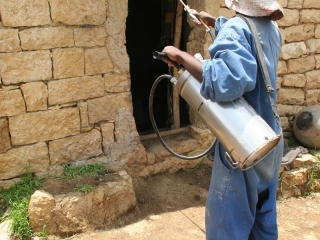
The LSHTM Malaria Centre, established in 1998, came into being at about the time of a renaissance in efforts to control malaria. In 1969, WHO closed the first malaria eradication programme and for the next 30 years the world neglected malaria with devastating consequences. Although there are no accurate figures, it is likely that in 1998 malaria was responsible for at least a million deaths a year, mostly in young children. The first sign of a reawakening of interest in malaria was the convening by WHO of the first Ministerial Conference on Malaria held in Amsterdam in 1992 to review the deteriorating situation. This was followed by the creation of the Multilateral Initiative on Malaria in 1997 and the Roll Back Malaria Partnership in 1998. These initiatives set out a new agenda for malaria research and control, and subsequent financial support from donors such as the Global Fund, the President’s Malaria Initiative, Bill and Melinda Gates Foundation, USAID and DFID have allowed many of the ideas generated by these initiatives to be put into place. Crucially, support from the Bill and Melinda Gates Foundation and MRC were important for the establishment of the Malaria Centre.
Twenty years after the creation of the Malaria Centre the situation is much improved; it is estimated that in 2016 there were 429,000 (UI:235-639,000) malaria deaths, a fall of 62% since 2000. Clinical cases have fallen by 41% since 2000 and 17 countries achieved elimination (WHO World Malaria Report 2017). These advances have not been achieved through any new ‘magic bullet’ but rather from expanded use of approaches that were available 20 years ago – diagnosis using rapid diagnostic tests, effective treatment with artemisinin combination therapy (ACT), widespread deployment of insecticide-treated nets and indoor residual spraying in selected areas. Enhanced deployment of these tools has been possible because of increased political commitment to malaria control, both national and international, and the enhanced funding that has followed.
However, there are no grounds for complacency. In the past few years there has been a levelling off in reductions in malaria mortality and morbidity associated with a flattening in funding for malaria control, and recent gains are threatened by drug and insecticide resistance. Sustaining the gains that have been achieved will require new drugs and insecticides and good progress is being made in this direction. However, in the areas of most intense transmissions, further progress will almost certainly require additional new tools such as a highly effective vaccine and/or novel vector control approaches, potentially including genetically modified mosquitoes.
Our postgraduate taught courses provide health practitioners, clinicians, policy-makers, scientists and recent graduates with a world-class qualification in public and global health.
If you are coming to LSHTM to study a distance learning programme (PG Cert, PG Dip, MSc or individual modules) starting in 2024, you may be eligible for a 5% discount on your tuition fees.
These fee reduction schemes are available for a limited time only.

